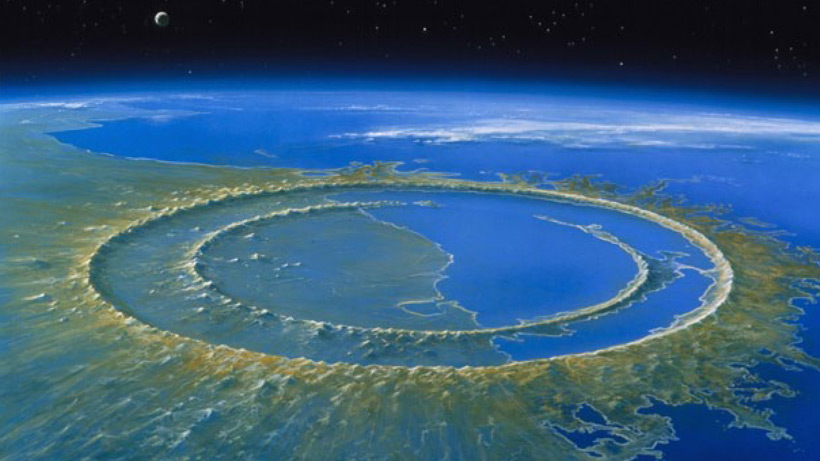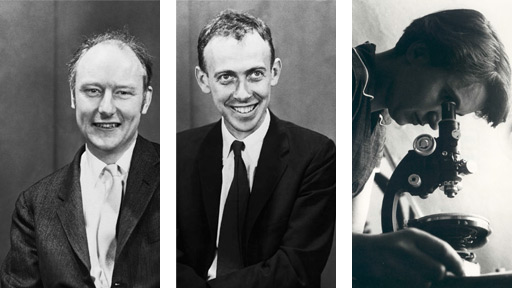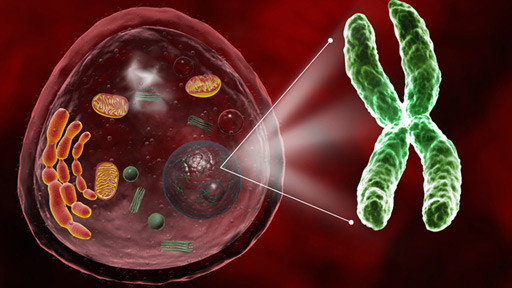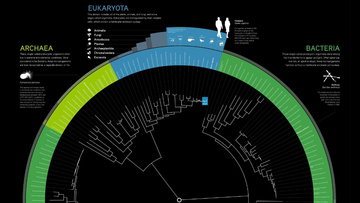7:28
It just may be the biggest murder mystery in history. How did the dinosaurs, some of the biggest and certainly one of the most ferocious species this planet has ever seen, become extinct?
The detective who solved the case is Walter Alvarez. While doing research on the K-T boundary in an unusual quarry in Italy's Apennine Mountains, he noticed an abundance of fossilized remains of tiny sea creatures in the limestone of the Cretaceous period, but not the Tertiary period. The scientist wondered: Could this be the result of a mass extinction event?
His suspicions grew when he saw that the dividing line of clay was dated around the same time that the dinosaurs went extinct. Also interesting were the off-the-charts levels of iridium, an element that's rare on Earth, but common in meteors.
Decades later, a break in the case.
Finally, in 1991, geologists came upon a site that showed what appeared to be the sediment from a massive tsunami 65 million years ago. They calculated that it came from a gigantic crater in the sea discovered near Mexico's Yucatán Peninsula. All the puzzle pieces fell into place. Alvarez's hypothesis about a cataclysmic event turned out to be right.
That K-T Boundary, revealing the impact of a colossal meteor, was bad news for the dinosaurs — and an estimated 75 percent of all species on Earth. But this cataclysmic event also created great conditions for mammals who contained the proper DNA qualities to adapt and thrive.

The crater of doom
In 1950, oil geologists had noted the unusual features of a crater in the sea off of Mexico's Yucatán Peninsula. They thought it was a buried volcano. When the K-T boundary geologists learned about it, they were able to prove it was their meteor impact site.
DNA: Life's Little Instructions
Surviving through change
After a major extinction, the weakest DNA dies off, while strong DNA is retained. But how it happens still puzzled biochemists by the middle of the 20th century. They accepted that creatures evolved like Darwin suggested, but still needed to figure out how parent organisms pass traits to their offspring. Most acknowledged that DNA, short for deoxyribonucleic acid, delivered the instructions. Yet they were baffled about its structure and how it worked.
In 1953, three English biochemists were racing to determine the double helix structure of the DNA molecule. They collected knowledge from Linus Pauling, an American biochemist, who was using X-ray technology and had already successfully shown that the general shape of DNA must be a helix, or spiral.
At the University of London, Rosalind Franklin recorded very precise X-ray diffraction images showing the basic form of DNA. Two lab mates at Cambridge University, James Watson and Francis Crick, caught sight of Franklin's images and began building models of sheet metal and wire. They were able to pair up DNA's chemical bases and construct a chemically stable structure.

Francis Crick and James Watson © Bettmann/CORBIS, Rosalind Franklin © Science Source
Crick, Watson, and Franklin
Franklin produced clear and accurate diffraction images of DNA crystals, which Watson and Crick used to pair two bases into a spiral staircase running in opposite directions — solving the complexity of DNA's structure.
Baffling DNA

© Creative Commons
The twist on life
The discovery of the double helix structure of DNA was a major step in understanding the complexities of life.
DNA consists of four main "bases" connecting two nucleotide strands in a double helix structure. The bases pair up: adenine (A) with thymine (T) and guanine (G) with cytosine (C) to connect the two strands, forming a spiral ladder. Different sequences of these four bases spell out the different genetic instructions for all life forms.

© 3D4Medical / Photo Researchers, Inc.
Chromosomes in a cell
In human cells, long sequences of DNA are contained in chromosomes. These chromosomes are packed inside the nucleus of the cell, protecting this important genetic information. DNA is so tightly wound within a chromosome that the 51 million to 245 million base pairs in one human chromosome are estimated to be up to two meters long unraveled.
Activity
Shared DNA
See the percentage of DNA these animals share with humans
The Tree of Life
3.5 Billion Years Old and Growing

© The Big History Project
It was first believed that humans represented the pinnacle of evolution. But as biologists continue to study life on Earth, and as new species are discovered and more evidence comes in, the Tree of Life will continue to grow.
At its center is LUCA, or the Last Universal Common Ancestor. It's believed it was a single-celled organism born more than 3.5 billion years ago. From there, the Tree of Life separates into more than 190 different species and three domains of life.
- Eukaryota, all the plants, animals, fungi, and some single-celled organisms
- Bacteria, single-celled organisms functioning without a membrane-enclosed cell nucleus
- Archaea, single-celled organisms often living in extreme environmental conditions
Quiz: Threshold 5
Life On Earth
- Ingredients
- Goldilocks Conditions
- New Complexity
-
Which of the following are critical to life emerging?
-
Which of the following is NOT a Goldilocks Condition needed for life on Earth to emerge?
-
Which of the following is NOT a new ability of newly complex organisms?
Congratulations!
You've earned the LIFE ON EARTH badge
You have unlocked 0 of 8 badges. You're on your way to becoming a Big Historian!
That Was Awesome
Unlock your badges and begin your journey towards becoming a Big Historian.
Congratulations, You're a
Big Historian
You've correctly completed all eight thresholds of complexity.
Get timely updates and connect with Big History
We are unable to complete your registration for the following reasons:
Please re-enter those items and submit again
There is no text in the password field
There is no text in the password field
There is no text in the name field